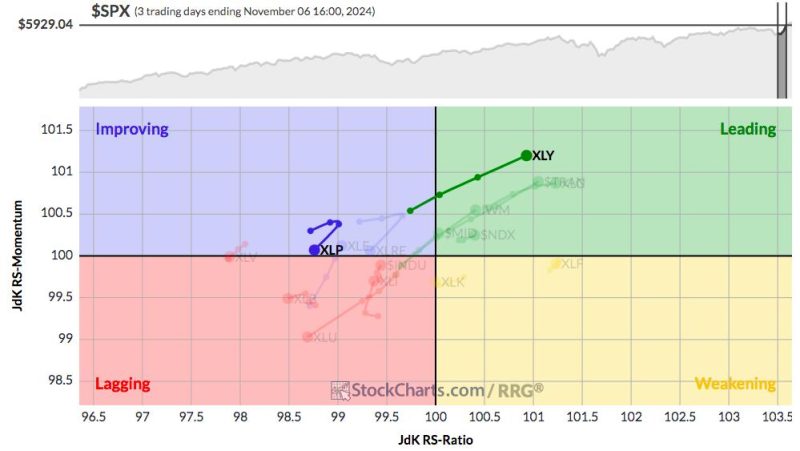The recent months have seen the continuation of the secular bull market accompanied by a significant shift in market rotation. The dynamics of the market have been evolving, presenting both opportunities and challenges for investors. In this article, we delve into the key aspects of this market trend and its implications for investors.
One of the notable trends in the market is the rotation of sectors. Traditional high-growth sectors such as technology have taken a back seat, while sectors like energy, financials, and industrials have witnessed renewed interest. This rotation indicates a broader shift in investor sentiment towards value stocks and sectors that stand to benefit from the economic recovery.
The reopening of the economy following the pandemic-induced shutdowns has led to increased consumer spending and a resurgence in economic activity. This has bolstered the outlook for cyclical sectors that were previously shunned in favor of technology and growth stocks. Companies in sectors like energy and industrials are now poised to capitalize on the recovery, driving their stock prices higher.
Another factor driving the secular bull market is the accommodative monetary policies adopted by central banks around the world. Low interest rates and quantitative easing measures have injected liquidity into the financial markets, fueling the rally in stocks. Investors have been drawn to equities as a more attractive investment option compared to bonds in a low-interest-rate environment.
Moreover, the rapid pace of technological innovation is reshaping industries and creating new investment opportunities. Companies at the forefront of technological advancements, such as clean energy, e-commerce, and biotech, continue to attract capital from investors seeking exposure to future growth trends. The convergence of technology and traditional sectors is blurring the lines between industries, presenting unique opportunities for investors to diversify their portfolios.
However, alongside the bullish market sentiment, there are risks that investors need to consider. Elevated valuations in certain sectors raise concerns about a potential market correction. Moreover, geopolitical uncertainties, inflationary pressures, and the looming threat of new virus variants pose challenges to the sustainability of the bull market.
In conclusion, the secular bull market continues its upward trajectory with a noticeable rotation in sectors favoring value stocks and industries poised for growth. Investors should closely monitor market dynamics, stay diversified, and remain vigilant of potential risks to navigate the evolving market landscape successfully. By adopting a prudent investment strategy and staying informed about market trends, investors can position themselves to capitalize on the opportunities presented by the ongoing bull market.




























